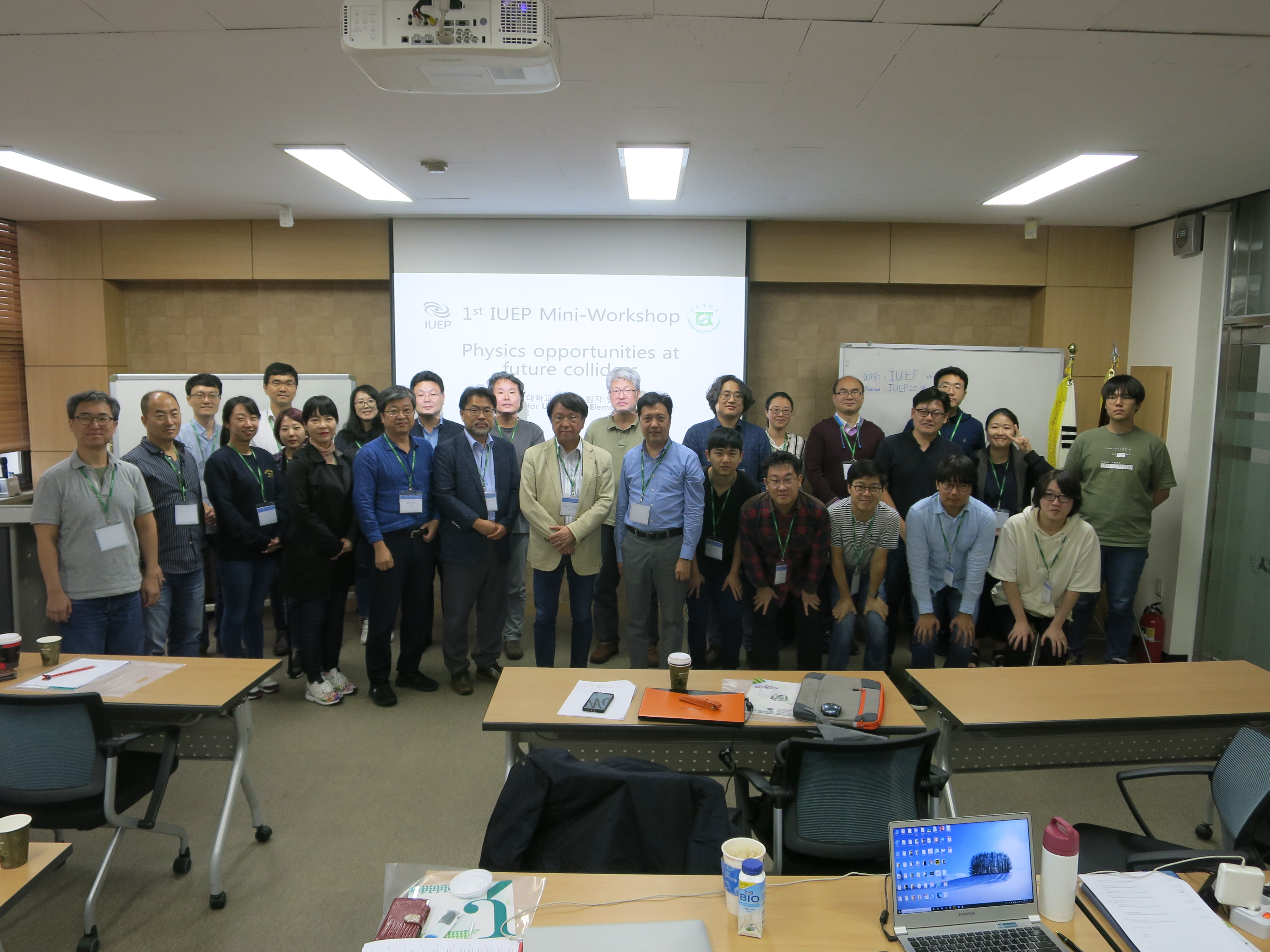1st IUEP Mini-Workshop: Physics Opportunities at Future Colliders
→
Asia/Seoul
Chonnam National University
Chonnam National University
Description
Welcome to the 1st IUEP (Institute of Universe & Elementary Particles) mini-workshop. This mini-workshop is to be held from 5 to 7 October 2018 at Chonnam National University which is located in the city of Gwangju, Republic of Korea. In this workshop, researchers in various fields of high energy physics will gather and discuss physics opportunities at future colliders. This mini-workshop is by invitation only.
일시 : 2018.10.05 (금) - 2018.10.07 (일)
장소 : 전남대학교 자연대 2호관 2층 교수회의실
주제 : Four tops, Di-Higgs, Charged Higgs, ILC, Dark Matter
초청연사
최수용 (고려대)
박주빈 (전남대)
이상은 (서울대)
정성훈 (서울대)
조원상 (서울대)
박찬범 (CTPU,IBS)
송정현 (건국대)
유금봉 (서울대)
김형도 (서울대)
Hitoshi Yamamoto (Tohoku)
강동우 (연세대)
강유진 (중앙대)
배규정 (CTPU,IBS)
박명훈 (서울과기대)
Programme Committee
박명훈 (서울과기대)
박주빈 (전남대)
유금봉 (서울대)
조원상 (서울대)
최성열 (전북대)
Local Organizing Committee
김현철 (전남대)
문동호 (전남대)
박주빈 (전남대)
이재식 (전남대)
장 용 (전남대)
주경광 (전남대)
